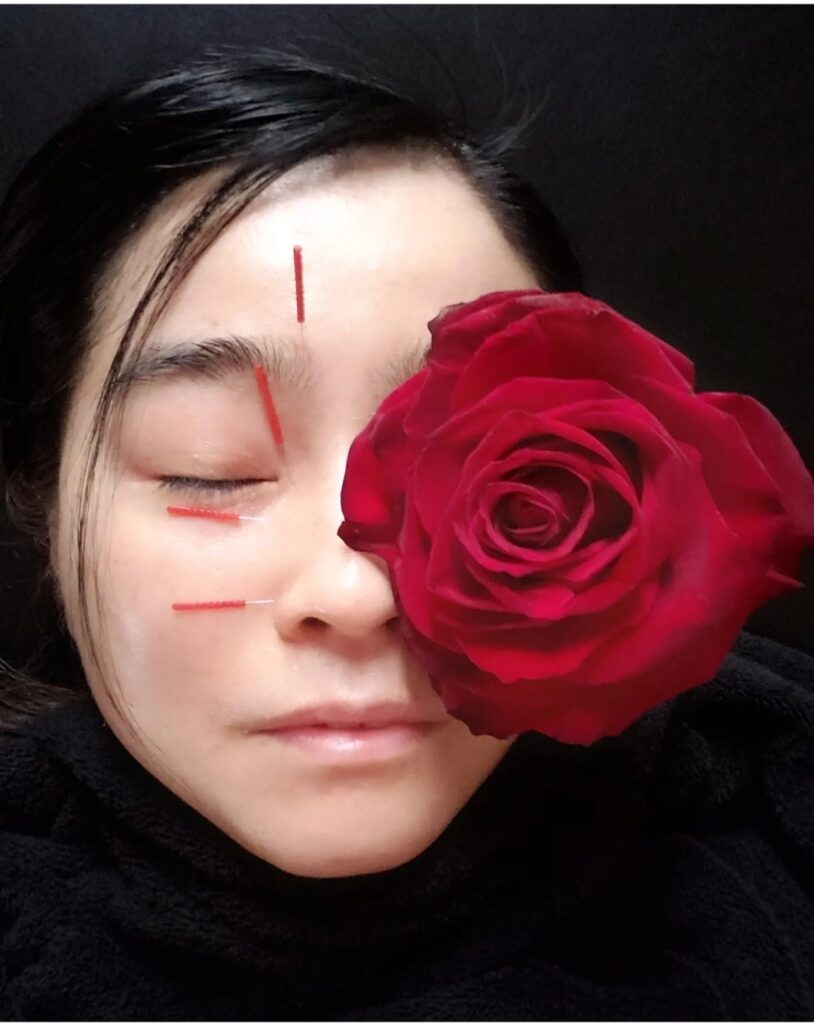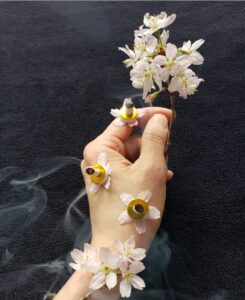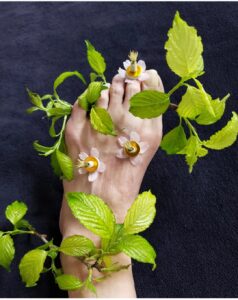花粉症 鼻水 目の痒み 充血
Hay fever, runny nose, itchy eyes, red eyes
花粉症とは花粉を吸い込んだりすることで「くしゃみ」「鼻水」「鼻づまり」等の症状を引き起こすアレルギー性鼻炎のひとつです。
花粉症はさまざまな花粉で発症しますが、その代表的なものが春のスギ花粉症です。スギ花粉症は日本固有のもので、現在日本人の約20%に発症し「国民病」とも言われているそうです。私たちの体には、害を及ぼす異物が入ってくると、その異物を攻撃して体の外に追い出そうとする力が備わっています。これが免疫システムです。花粉症の場合は、体が花粉を害のある異物だと誤った判断をしたことで、免疫反応の一種であるアレルギー反応がおこります。 体に侵入してくる異物を「抗原」といい、そのなかでもアレルギー症状を起こす物質を「アレルゲン」と言われます。。花粉のほかにも、ダニやほこり、食物などがアレルゲンになることがあります。花粉が鼻や目から体に侵入すると、その刺激で「IgE抗体」という物質がつくられ、マスト細胞(肥満細胞)に結合します。このとき、花粉は体内から追い出すべき異物として記憶されるのです。その後、再び侵入してきた花粉が鼻などの粘膜に付着すると、ヒスタミンやロイコトリエンなどの化学物資を放出します。この反応が鼻の粘膜で起こるとくしゃみや鼻みず、鼻づまりが出現し、目の粘膜で起これば目のかゆみや涙目といった症状が現れます。花粉症の症状は、主に、鼻と目にでます、アレルギー性鼻炎とアレルギー性結膜炎です。アレルギー性鼻炎は、くしゃみと鼻みずがひどいタイプと、鼻づまりがひどいタイプ、3つともあるタイプ(充全型)などがあります。アレルギー性結膜炎は、目のかゆみ、充血、流涙などです。
くしゃみ・鼻みずは、アレルギー反応によって鼻の粘膜にあるマスト細胞から「ヒスタミン」などの化学物質が放出されて起こります。ヒスタミンなどが神経を刺激し、花粉を体の外へ追い出そうとして、くしゃみや鼻水がでます。鼻づまりは、マスト細胞から放出される「ロイコトリエン」などの化学物質が、血管を刺激して起こります。 鼻の粘膜の血管が広がり、粘膜が腫れたりするため、鼻が詰まります。くしゃみ・鼻みずと、鼻づまりでは、症状を引き起こす主な原因物質が異なります。鼻づまりのために口呼吸になると、のどが乾燥して痛むことがあります。目のかゆみは、花粉が目の粘膜に付着し、アレルギー性結膜炎を起こすことで生じます。かゆみのほかに、目の充血や、かゆみ、涙目、目やになどの症状があります。花粉の季節に、頭痛が起こる人がいます。花粉症の時期の頭痛は、 花粉症が原因のときもあります。くしゃみ、鼻みず、鼻づまりがあるとき、鼻の粘膜は炎症を起こしています。この炎症が、鼻の奥の方にある副鼻腔の部分にまで広がると、額のあたりや目、頬などに重だるさを感じて頭痛や、頭重感につながることがあります。今症例では、鍼灸治療により、免疫向上、体質改善をめざし、目と鼻には、花粉症の特効穴である、晴明、攅竹、鼻通、迎香に、丁寧に刺鍼して、症状の緩和を致しました。
Hay fever is a form of allergic rhinitis that causes symptoms such as "sneezing," "runny nose," and "stuffy nose" when pollen is inhaled.
Hay fever can be caused by a variety of pollens, the most common of which is cedar pollen allergy in spring. Cedar pollinosis is unique to Japan and is said to be a "national disease" with about 20% of the Japanese population suffering from hay fever. Our body is equipped with the ability to attack and expel harmful foreign substances from the body when they enter. This is the immune system. In the case of hay fever, the body misjudges pollen as a harmful foreign substance, causing an allergic reaction, a type of immune response. Foreign substances that enter the body are called "antigens," and substances that cause allergic symptoms are called "allergens. In addition to pollen, dust mites, dust, and food can also be allergens. When pollen enters the body through the nose or eyes, it stimulates the body to produce a substance called "IgE antibody," which binds to mast cells (mast cells). At this time, pollen is stored as a foreign substance that should be expelled from the body. Later, when the pollen that has invaded the body again adheres to the mucous membranes of the nose and other parts of the body, it releases chemical substances such as histamine and leukotriene. When this reaction occurs in the nasal mucosa, sneezing, runny nose, and nasal congestion appear, and when it occurs in the eye mucosa, symptoms such as itchy eyes and watery eyes appear. Symptoms of hay fever mainly occur in the nose and eyes: allergic rhinitis and allergic conjunctivitis. Allergic rhinitis can be classified into three types: severe sneezing and runny nose, severe nasal congestion, and all three types (hyperemesis gravidarum). Allergic conjunctivitis includes itchy, bloodshot eyes and running tears.
Sneezing and sniffling are caused by an allergic reaction that releases chemicals such as "histamine" from the mast cells in the nasal mucosa. Histamine and other chemicals stimulate nerves to expel pollen from the body, causing sneezing and runny nose. Nasal congestion is caused by chemicals such as leukotriene released from mast cells, which stimulate blood vessels. Blood vessels in the mucous membranes of the nose widen and the mucous membranes swell, resulting in a stuffy nose. Sneezing and sniffling differ from nasal congestion in the main causative agents that cause symptoms. Mouth breathing due to nasal congestion can cause dry and sore throat. Itchy eyes are caused when pollen adheres to the mucous membranes of the eyes and causes allergic conjunctivitis. In addition to itching, other symptoms include redness of the eyes, itching, watery eyes, and eye discharge. Some people experience headaches during the pollen season. Headaches during hay fever season are sometimes caused by hay fever. When there is sneezing, sniffling, or nasal congestion, the mucous membranes of the nose are inflamed. When this inflammation spreads to the sinus area in the back of the nose, it can lead to headaches and a feeling of heaviness in the forehead area, eyes, and cheeks. In this case, we aimed to improve the immune system and constitution through acupuncture and moxibustion treatment, and carefully inserted acupuncture needles into the eyes and nose at Seimei, Tanchiku, Nitong, and Yingxiang, which are special effective points for hay fever, to relieve the symptoms.



